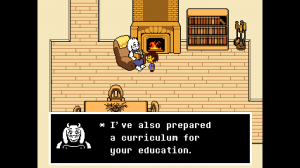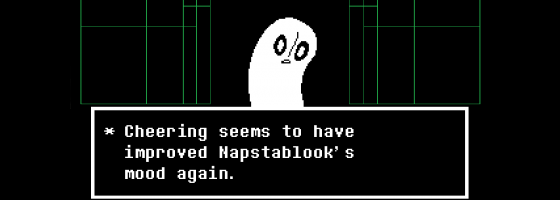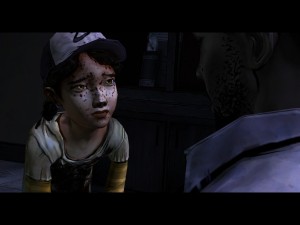A few weeks ago, I had an excellent conversation about morality in game design; where we talked about different kinds of choices can impact the player’s decision making. However, no matter what kind of choices the designer implements, they’re still limited to the confines of the game. In turn, this creates an interesting and possibly disturbing debate when a designer decides to push against this limitation.
A Closed System:
Whenever we turn on any video game regardless of genre or platform, we are entering into a non verbal contract with said game. The terms are that the game presents us with a unique situation for us to explore and interact with to our heart’s content, but everything remains locked to the confines of the game.
Someone can play Eurotruck Simulator for over 100 hours, but that doesn’t mean when they step away from their computer that they can get a job in the trucking industry. From a narrative perspective, this means any choices that we make in a game are tied to said game and experience. We can be a complete angel/bastard in a game, and it will last until we either restart or delete our save file.

No matter how you play any of the Grand Theft Auto games, your choices are always short-term and never create permanent changes to the game
This is one of the reasons why early attempts at morality in games such as the Bioware titles didn’t work, because the choices were tied to the abstracted design of the mechanics.
In this way, you’re not thinking about the choices from a moral perspective, but from a min/max one; a good case in point would be Infamous’s choices tied to your power set. Another example would be Bioshock’s heavy handiness of trying to present a moral choice from only two extremes, further brought down by the min/maxing of the game’s design.
There is one other reason why these choices have trouble resonating with us, and it has to do with the conditioning from playing games.
Seeing it All:
Video games have trained us to explore and engage with as many parts of the game as possible. There are many different psychological motivators at work, which we talked about on a separate podcast. The point is that if the game gives us the option to do something, chances are we’re going to do it at least once to see what happens.
Raise your hand if during the first time you played a Grand Theft Auto title that you went on a killing spree to see what happened. Now, everyone who did it was not a sociopath, but we wanted to push the design of the game.
This can be seen further by the addition of achievements tied to actions that would go against our nature. We are conditioned not to leave tasks unfinished, and if that means going after achievements like the dastardly one in Red Dead Revolution, then people are going to do it.
That raises an interesting question: Imagine in The Walking Dead that there was a specific set of choices that if the player would do, they could kill Clementine, who was considered one of the best designed characters in recent years.
The game would not award you anything to do it, there was no in-game push to do it, but the choice was there; how many people would do it to see what would happened?
Again, our nature to see everything can betray the moral choices that the designer laid out. With that said, what happens when a designer knows that and decides to push things beyond the game space?
The End of the World:
(Warning: This next section contains spoilers for the game Undertale; read on at your own risk.)
Undertale has become one of the most intriguing games to be released in 2015; thanks to a combination of old school JRPG design with a deeply resonating story and theme. Every character in the game is presented as a living character in this world, not some mindless monster or generic bad guy. Part of the game’s charm is the ability to win over every enemy in the game instead of having to kill them.
The game constantly tracks what you do in a play through and beyond it with the option to replay the game a different way. There are three major endings in Undertale: A normal end, the pacifist ending for not killing anyone, and one other.
The final ending is one that both the characters of the game and the creator of Undertale hate: The No Mercy Ending, AKA, the Genocide Ending. The genocide ending is something that you will never accidentally stumble on; it requires you to systematically kill every character in the game.
When you start down this road, the game’s mood takes a sharp left turn. Characters will comment on how disturbed you are and the music becomes ominous and characters will start pleading with you to turn back. Given how fleshed out the characters are in Undertale, it can become emotionally draining to go down the path of destruction.
For players who decide to see it all, they’ll be treated to two super hard bosses and one of the most disturbing endings in recent memory. At the end, the game will address your behavior and discuss that you have done something unforgivable; this is where things get interesting.

Undertale is the only game that comes to mind that actively fights back against the player’s desire to see everything a game has to offer
After completing the genocide ending, you cannot play Undertale anymore, because you killed the world and your game will forever be tainted.
The only way to reset the game at this point is to “sell your soul” to the creature that you’ve become. The game will permanently mark you as soulless and will remind you of that fact at the end of every game.
Again, the developer doesn’t explicitly condone this by preventing it, there are no in-game advantages or achievements for doing it, and the only point is that the genocide ending is an option; nothing more, nothing less.
Stained:
Undertale is the only game that comes to mind that so openly presents an option to go against the normal play of a video game. There is a debate to be have about this kind of presentation: Is it still testing the player’s morality when they know that something is still designed as an option, no matter how disturbing it is? That is a question that is a bit too big to try to answer here.
For me personally, I do feel that no matter how disturbing the choice is or the consequences, because it is tied to something that I know is a system in a video game, it doesn’t bother me. With that said, I know for the vast majority of fans of Undertale, I’m in the minority on that point.
Having these “irredeemable” actions in game design could be used to give new light to morality choices. Going back to Grand Theft Auto, imagine if after you kill 100 civilians/law enforcement without dying, every time you load up the game and turn on the radio there will be a message asking people to remember those who died from your massacre. There will also be a memorial statue honoring them as well.
And that leaves me with one final question for this post: How many people do you think would do that?



